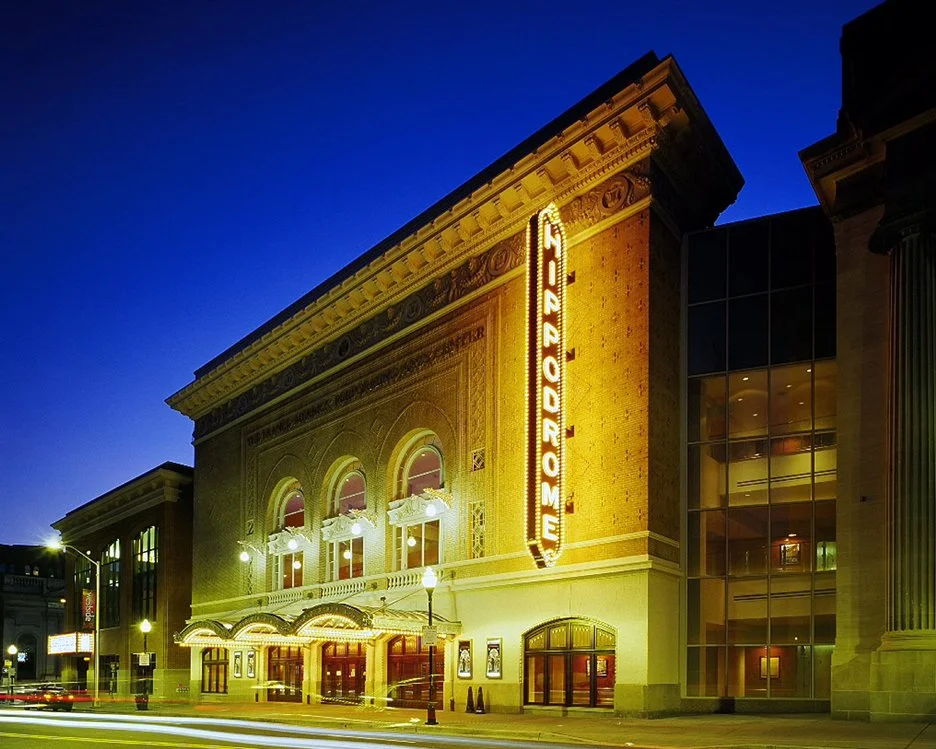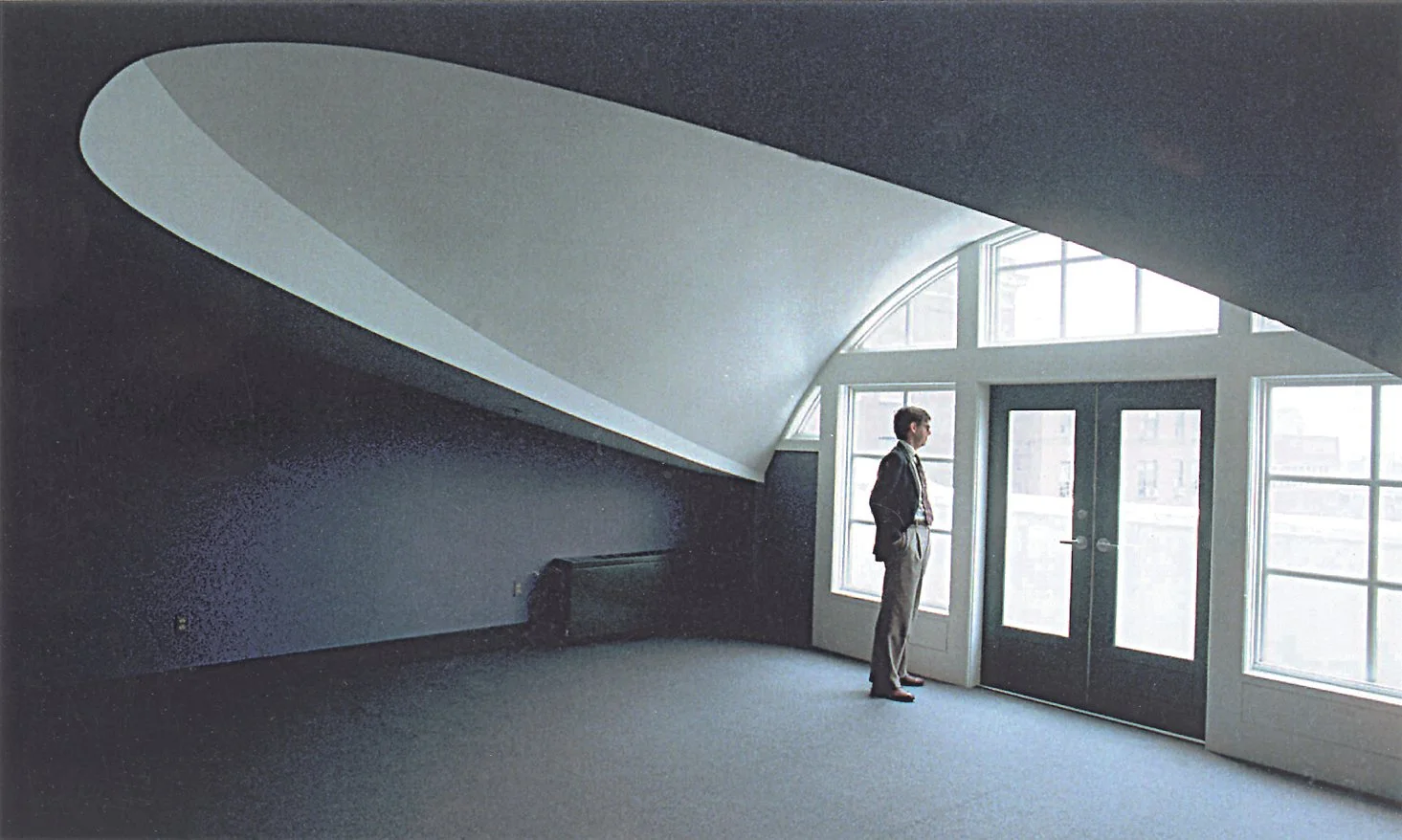
As brick-and-mortar business spaces take a backseat to Internet services like Amazon, Frank Dittenhafer of Murphy & Dittenhafer Architects discusses the future – and importance of – actual buildings.

Scroll through images that Frank Dittenhafer assembled for a recent presentation at a real estate development symposium, and consider: What do you see?
Notice the smooth lines of a York County skatepark, the contours and the rounded edges. See the vivid colors of Lexington Market in Baltimore, and the morning light pouring through a wall of windows at a local library. Scanning those pages of pictures, Dittenhafer can see a compilation of his firm’s past projects.
But he also sees flashes of the future.
The principal at Murphy & Dittenhafer Architects believes the future of buildings will center around several key components, including authenticity and smart repurposing. Yet, at the heart of all new work will lie the same deep level of thinking – that familiar search for soul — that’s come to define the firm.
“I talk about buildings that are crafted, thoughtful and poetic,” Dittenhafer said. “We like to say we’re always trying to discover what the building wants to be.”

Buildings of the future
The future of buildings, it seems, will likely bring fewer buildings, according to Dittenhafer. As internet services grow, sites like Hulu and eBay, Amazon and Realtor.com and countless others will mean fewer brick-and-mortar business spaces.
So, the work will matter even more.
Much of the focus will be on environments providing authentic experiences, Dittenhafer said. From York’s Central Market to the Forum Auditorium to the CODO loft apartments, customers respond to sites that mesh with their surroundings, buildings that feel perfectly fitted to their purpose.
“Across all sorts of projects, it’s the same. People want the real deal,” he said.
Dittenhafer also sees a continued push for both walkable urban settings, and hybrid buildings that are expanded from their traditional use. Libraries and churches are prime examples of the sorts of sites that must now morph into something more than they once were, in order to keep up with an ever-changing world – and retain their relevance as primary gathering places within the community .
Like us on Facebook!
Repurposing, in general, will be a key factor going forward, as architects work to adapt the existing landscape to new needs and breathe life into stale sites.
“You’re always going to have buildings that you have to work with and find a way to reuse,” he said. “That’s going to continue, and we like that challenge.”
Add in the historical preservation work that Murphy & Dittenhafer Architects is known for across the area, and you have a rough blueprint for where the profession is going.

‘Something that will resonate’
Today, architects’ tools are more powerful than ever. Data-collection and design software allow professionals unprecedented access to information about what’s been done in the past, and how it’s being done now.
But at Murphy & Dittenhafer Architects, thoughts turn toward the future. With what we’ve learned, how can it be done differently?
How can it be better?
“It’s too easy to go through the data and just rehash the same thing time after time,” Dittenhafer said. “That’s a unique aspect of our office. We take a fresh look every time – a deep, hard, thoughtful look.”
Browse a bit more through that real estate presentation, and you’ll find sites designed by other architects: a visual arts building in Iowa stacked high like children’s blocks; a Texas ranch house with a stone fireplace waiting on the patio; a home in the mountains out west, its windows overlooking a river at sunset.
They’re inspirational places, each one, Dittenhafer said.
And that’s the idea.
“With every project, we’re looking to create something that will resonate with people,” he said. “As architects, that will always be our responsibility.”
Murphy & Dittenhafer Architects is working hard and collaborating with the community on an urban planning study for South George Street in York City.
“Historic preservation has always been a hallmark of ours for our 40-year history,” says M&D President Frank Dittenhafer II. These 10 projects exemplify our passion for this work.
It’s the 40th year of Murphy & Dittenhafer Architects, so Frank Dittenhafer II, President, is taking the time to highlight some of our most influential projects over the decades.
We’re celebrating 40 years of influence in Pennsylvania and Maryland. With that, we couldn’t help but reflect on some of the most impactful projects from our history.
Harford Community College’s expanded new construction Chesapeake Welcome Center is a lesson in Architectural identity
At Murphy & Dittenhafer Architects, we feel lucky to have such awesome employees who create meaningful and impressive work. Meet the four team members we welcomed in 2024.
The ribbon-cutting ceremony at the new Department of Legislative Services (DLS) office building in Annapolis honored a truly iconic point in time for the state of Maryland.
As Murphy & Dittenhafer architects approaches 25 years in our building, we can’t help but look at how far the space has come.
Murphy & Dittenhafer Architects took on the Architecture, Interior Design, & Overall Project Management for the new Bedford Elementary School, and the outcome is impactful.
The memorial’s groundbreaking took place in June, and the dedication is set to take place on November 11, 2024, or Veterans Day.
President of Murphy & Dittenhafer Architects, Frank Dittenhafer II, spoke about the company’s contribution to York-area revitalization at the Pennsylvania Downtown Center’s Premier Revitalization Conference in June 2024. Here are the highlights.
The Pullo Center welcomed a range of student musicians in its 1,016-seat theater with full production capabilities.
“Interior designs being integral from the beginning of a project capitalize on things that make it special in the long run.”
Digital animations help Murphy & Dittenhafer Architects and clients see designs in a new light.
Frank Dittenhafer and his firm work alongside the nonprofit to fulfill the local landscape from various perspectives.
From Farquhar Park to south of the Codorus Creek, Murphy & Dittenhafer Architects help revamp York’s Penn Street.
Designs for LaVale Library, Intergenerational Center, and Beth Tfiloh Sanctuary show the value of third places.
The Annapolis Department of Legislative Services Building is under construction, reflecting the state capital’s Georgian aesthetic with modern amenities.
For the past two years, the co-founder and president of Murphy & Dittenhafer Architects has led the university’s College of Arts and Architecture Alumni Society.
The firm recently worked with St. Vincent de Paul of Baltimore to renovate an old elementary school for a Head Start pre-k program.
The market house, an 1888 Romanesque Revival brick structure designed by local Architect John A. Dempwolf, long has stood out as one of York’s premier examples of Architecture. Architect Frank Dittenhafer is passing the legacy of serving on its board to Architectural Designer Harper Brockway.
At Murphy & Dittenhafer Architects, there is a deep-rooted belief in the power of combining history and adaptive reuse with creativity.
University of Maryland Global Campus explores modernizing its administration building, which serves staffers and students enrolled in virtual classes.
The Wilkens and Essex precincts of Baltimore County are receiving solutions-based ideas for renovating or reconstructing their police stations.
The firm has earned the designation annually since 2016 in recognition of its commitment to supporting newer professionals in the field.






























To round out our 40th-year celebrations, enjoy 10 more impactful and diverse Architecture projects designed by M&D. These projects, most of which have received design awards, confirm the variety in design (from scale to usage) that we continue to be involved in today.